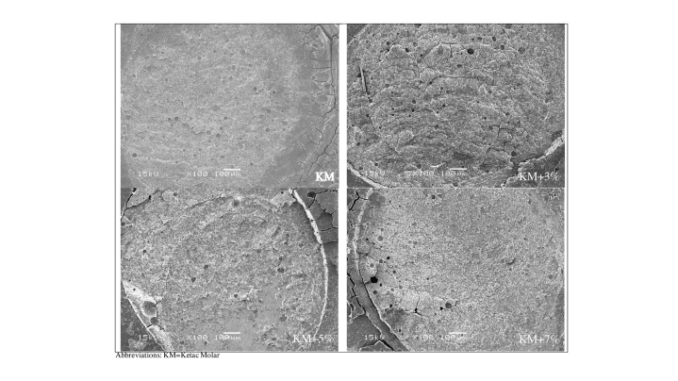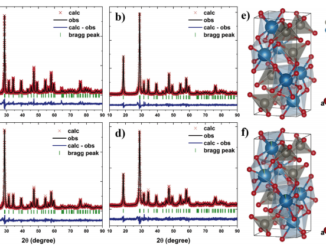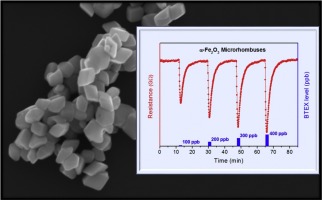
TiO 2 nanotubes improve physico-mechanical properties of glass ionomer cement
Abstract:
Objectives: The aim of this study was to determine the physico-mechanical properties of a high viscosity glass ionomer cement (GIC) reinforced with TiO2 nanotubes (TiO2-nt).
Methods: TiO2-nt was incorporated into the GIC powder components (Ketac Molar EasyMix™) in concentrations of 0% (control group), 3%, 5%, 7% by weight. Compressive strength (n = 10/group), three point bending for flexural strength (n = 18/group), microshear bond strength to dentin and failure mode (n = 20/group), and surface roughness and weight loss before and after brushing simulation (30,000 cycles) (n = 8/group) were evaluated. Data were submitted to Shapiro-Wilk, ANOVA, Tukey and Chi-square tests (α ≤ 0.05).
Results: Addition of 5% of TiO2-nt into GIC presented the highest values for compressive strength and differed from the control, 3% and 7% groups (p = 0.023). There were no significant differences in flexural strength (p = 0.107) and surface roughness before and after the dental brushing (p = 0.287) among the groups. GIC added with 5% TiO2-nt showed the lowest weight loss values (p = 0.01), whereas the control, 3% or 5% TiO2-nt groups presented similar microshear bond strength values (p ≥ 0.05). The 5% TiO2-nt group featured higher microshear bond strength than the 7% TiO2-nt group (p = 0.034). Cohesive in material was the most representative failure mode for all groups.
Significance: The incorporation of TiO2-nt did not affect GIC’s adhesiveness to dentin, but improved its compressive strength at 5%. Furthermore, TiO2-nt decreased the percentage of weight loss after GIC’s surface wear.
Author(s): Kantovitz, K.R.; Fernandes, F.P.; Feitosa, I.V.; Lazzarini, M.O.; Denucci, G.C.; Gomes, O.P.; Giovani, P.A.; Moreira, K.M.S.; Pecorari, V.G.A.; Borges, A.F.S.; Nociti Jr, F.H.; Basting, R.T.; Lisboa-Filho, P.N.; Puppin-Rontani, R.M.
Dent Mater.
Published: 2020 Feb 1




